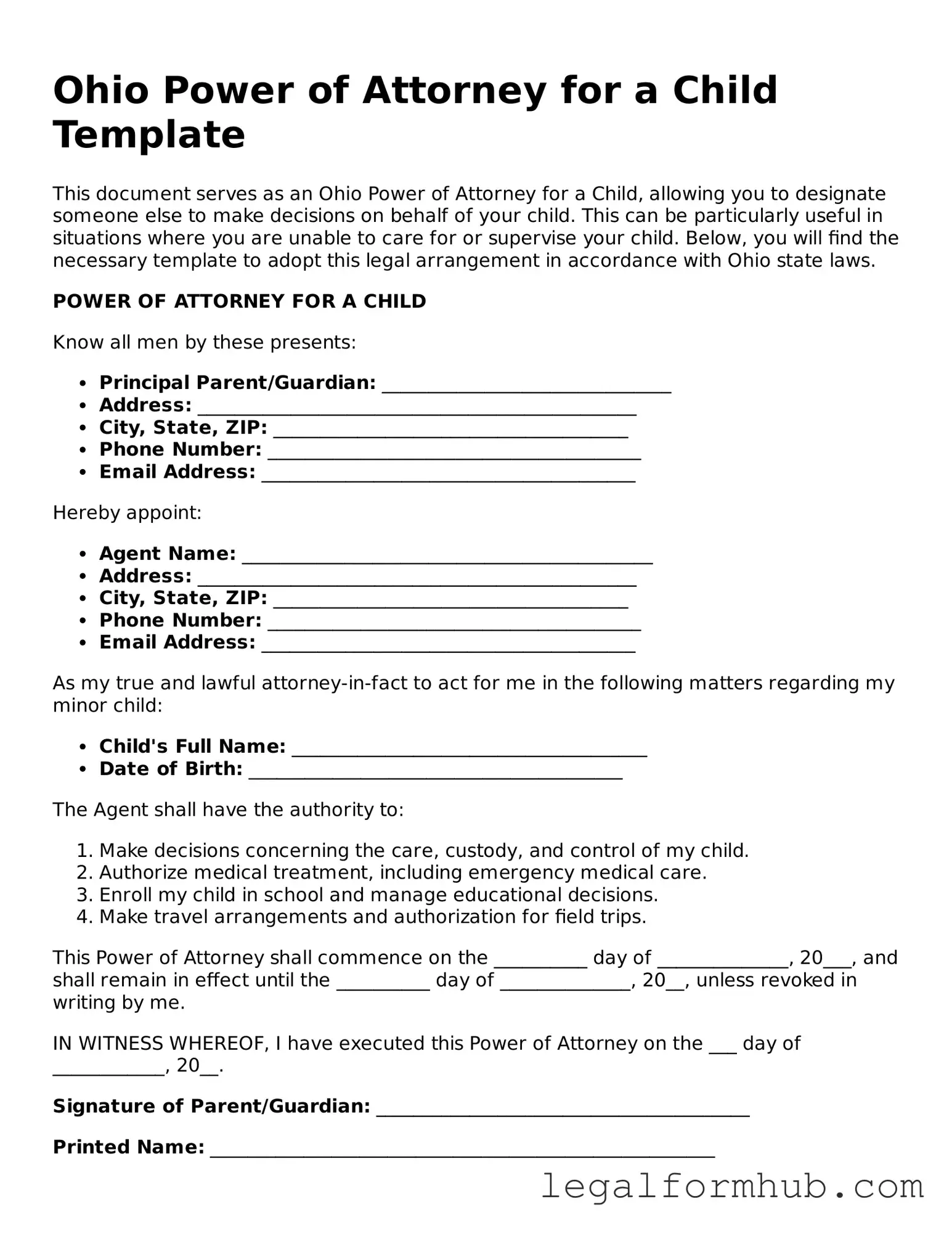The Ohio Power of Attorney for a Child form is similar to a General Power of Attorney. A General Power of Attorney allows an individual to appoint someone to manage their financial and legal affairs. Both documents grant authority to another person, known as the agent or attorney-in-fact, to make decisions on behalf of the principal. However, while the General Power of Attorney focuses on financial matters, the Power of Attorney for a Child specifically addresses the care and custody of a minor child, allowing the agent to make decisions related to the child's education, healthcare, and welfare.
For those looking to delegate authority in critical situations, understanding the Ohio Power of Attorney for a Child is essential. This document serves a specific purpose in safeguarding a child’s well-being, similar to a medical Power of Attorney, which allows for health-related decisions. To ensure comprehensive management of such responsibilities, parents may find it beneficial to explore resources available online, such as Fill PDF Forms, which can aid in the completion of these important legal documents.
Another similar document is the Medical Power of Attorney. This form allows an individual to designate someone to make healthcare decisions on their behalf if they become unable to do so. Like the Power of Attorney for a Child, the Medical Power of Attorney empowers an agent to act in the best interest of the individual. The key difference lies in the focus; the Medical Power of Attorney is strictly for healthcare decisions, while the Power of Attorney for a Child includes broader responsibilities related to the child's overall well-being.
The Child Custody Agreement shares similarities with the Power of Attorney for a Child. Both documents involve the care and custody of a minor. A Child Custody Agreement outlines the living arrangements and responsibilities between parents or guardians. In contrast, the Power of Attorney for a Child is often used when a parent needs to temporarily delegate their authority to someone else, such as a relative or friend, without going through a custody battle or court process.
A Guardianship Agreement is another related document. This legal arrangement establishes a person as the guardian of a child, giving them the authority to make decisions regarding the child's upbringing. While a Power of Attorney for a Child is usually temporary and can be revoked, a Guardianship Agreement is typically more permanent and requires court approval. Both documents aim to ensure the child's needs are met, but they differ in terms of duration and legal oversight.
The Adoption Agreement also bears similarities to the Power of Attorney for a Child. An Adoption Agreement formalizes the legal process of becoming a child's parent, transferring all parental rights and responsibilities. While the Power of Attorney for a Child allows for temporary delegation of authority, adoption is a permanent change in a child's legal status. Both documents prioritize the child's welfare, but they serve different purposes in terms of parental rights.
The Child Support Order is another document that relates to the care of a child. This legal order outlines the financial support one parent must provide to the other for the child's upbringing. While the Power of Attorney for a Child focuses on decision-making authority, a Child Support Order ensures that the child’s financial needs are met. Both documents are essential for a child's well-being, but they address different aspects of parental responsibility.
Lastly, the Temporary Custody Order is similar to the Power of Attorney for a Child in that it provides a framework for the care of a child when the parents are unable to do so. This order is often issued by a court and grants temporary custody to another individual. While the Power of Attorney for a Child is a private arrangement between parties, a Temporary Custody Order involves judicial oversight. Both documents aim to protect the child’s interests during times of need, but they differ in their legal processes and implications.
